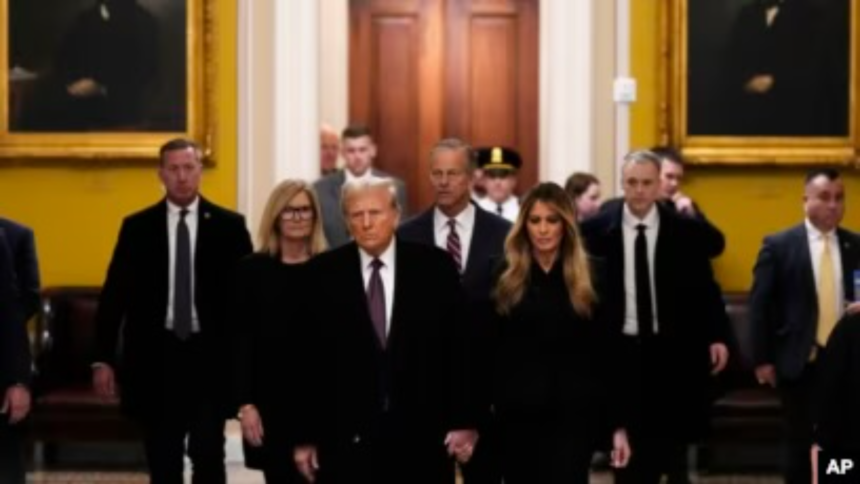President-elect Donald Trump visited the U.S. Senate on Wednesday, seeking to rally Republicans around his priorities of tax cuts, border control, and increased fossil fuel production just 12 days before his return to the White House, reports VOA.
This marked Trump’s first visit to the U.S. Capitol since January 6, 2021, when his supporters stormed the building amid unfounded claims of election fraud.
Trump paid his respects to former President Jimmy Carter, whose body lay in state at the Capitol Rotunda, before meeting with Republican senators. He is expected to attend Carter’s funeral in Washington on Thursday.
Legislative Challenges
With slim majorities in both the Senate (53-47) and House of Representatives, Republicans remain divided over whether to consolidate Trump’s priorities into a single bill or split them into two measures.
Some GOP senators advocate a two-bill strategy, focusing first on swift wins for border and energy policies before tackling the more contentious issue of tax cuts. House Republicans warn that a divided approach could risk failure in passing the second bill, which seeks to extend tax cuts implemented during Trump’s first term.
“We’re considering whether it’ll be one or two bills. It doesn’t matter as long as we get results,” Trump told reporters while walking through the Capitol.
Republicans also face the challenge of offsetting the fiscal impact of proposed tax cuts on the nation’s $36 trillion debt.
Trump’s Influence in Congress
Trump’s involvement in congressional negotiations has already proved pivotal. Last week, he helped secure the re-election of House Speaker Mike Johnson by persuading two hardline GOP members to change their votes.
“Nothing happens without White House leadership,” said Republican Senator Thom Tillis. “President Trump played the decisive role in resolving the speaker vote, and we’ll need his leadership again to finalize these bills.”
Strategic Planning
On Friday, Trump will host a three-day retreat at his Mar-a-Lago residence in Florida with House Republicans to align strategies for advancing his legislative agenda.
“He needs to hear our perspectives on how to achieve our shared goals,” said Senator Shelley Moore Capito, who organized Wednesday’s meeting.
Republicans plan to utilize a complex legislative maneuver to bypass Democratic opposition in the Senate, where most bills require 60 votes to advance.
However, the Republican majority in the House (219 seats) is expected to narrow to 217-215 after Trump’s inauguration, as two GOP lawmakers are set to leave Congress to join his administration.
Trump’s hands-on approach underscores the narrow margins and heightened stakes for advancing his agenda as he prepares to assume office.







